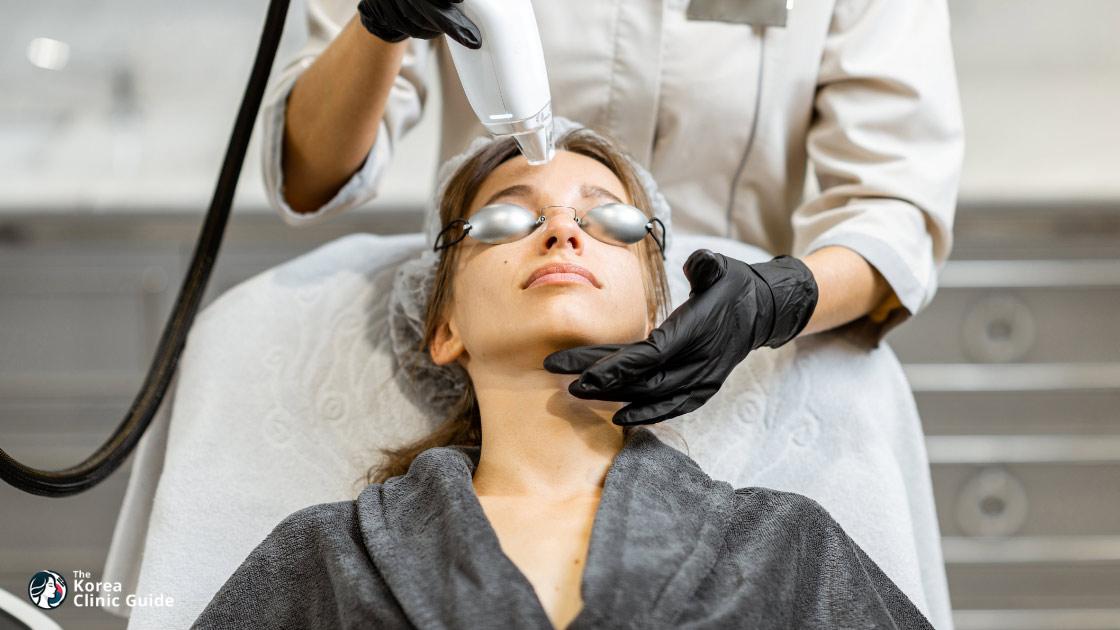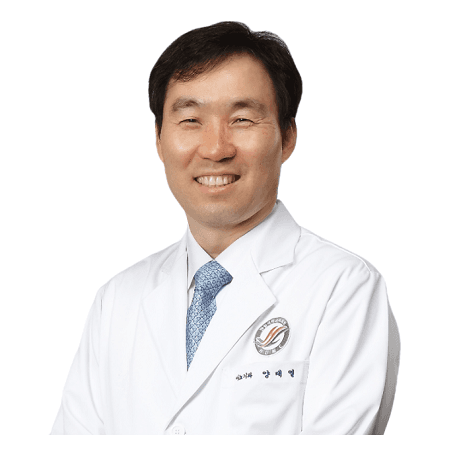Medical Tourism Blog
Hypertrophic Scar Treatment in Korea | Best Clinics, Costs, Procedure Types & More

Table of contents
- What Is Hypertrophic Scar Treatment?
- Best Hypertrophic Scar Treatment Clinics in Korea
- Getting Hypertrophic Scar Treatment in Korea
- Cost of Hypertrophic Scar Treatment in Korea
- Alternatives to Hypertrophic Scar Treatment
- Conclusion
- Hypertrophic Scar Treatment in Korea: Frequently Asked Questions
Did you know that over 100 million people worldwide develop scar formation each year after undergoing surgery? For many, hypertrophic scars can be a persistent and distressing issue, but Korea's cutting-edge dermatological treatments offer promising solutions to diminish these unwanted marks and restore skin confidence.

What Is Hypertrophic Scar Treatment?
Hypertrophic scar treatment encompasses a variety of medical procedures and therapeutic techniques aimed at reducing the size, appearance, and symptoms of hypertrophic scars. These are raised, thickened areas of skin that result from an abnormal response to wound healing, often due to excessive collagen deposition. Unlike keloids, hypertrophic scars stay within the boundaries of the original wound. These treatments can be classified into several categories, each with distinct mechanisms and approaches.
Topical Treatments
Topical treatments are the first line of defense against hypertrophic scars and include silicone gels, sheets, and steroid-containing creams. Silicone-based products work by hydrating the scar tissue, thereby reducing collagen production and flattening the scar. Steroid creams help to diminish inflammation and reduce scar size over time.
Intralesional Injections
Intralesional injections, commonly using corticosteroids like Kenalog (triamcinolone acetonide), are often employed to reduce the thickness and discomfort associated with hypertrophic scars. The corticosteroid is injected directly into the scar tissue, inhibiting collagen production and reducing inflammation. Multiple sessions are typically required for optimal results.
Laser Therapy
Laser therapy is a popular and effective option for hypertrophic scar treatment. Fractional CO2 lasers and pulsed dye lasers (PDL) are commonly used. These lasers work by targeting blood vessels within the scar tissue, reducing redness and promoting collagen remodeling. The fractional CO2 laser also resurfaces the skin, making the scar less noticeable and smoother.
Cryotherapy
Cryotherapy involves freezing the hypertrophic scar tissue with liquid nitrogen. This method is particularly effective for smaller scars. The freezing action destroys abnormal collagen, leading to a reduction in scar size and thickness. However, it can sometimes result in lighter skin patches, known as hypopigmentation.
Surgical Removal
For very large or unresponsive hypertrophic scars, surgical intervention may be considered. The scar tissue is excised, and the wound is closed with stitches or skin grafts. Post-surgical care might involve other treatments like silicone sheets or intralesional injections to prevent recurrence.
Radiation Therapy
Radiation therapy is used as an adjunct to surgical excision in severe cases. Low-dose radiation is applied to the scar site immediately after surgical removal to prevent the re-formation of hypertrophic tissue. This treatment must be carefully administered to avoid potential side effects.
Pressure Therapy
Pressure therapy uses custom-fitted garments to apply consistent pressure to the scar. This method is believed to reduce blood flow to the scar tissue, thereby limiting collagen deposition. It is commonly used for scars resulting from burns and is usually recommended for an extended period, sometimes up to a year.
Emerging Therapies
Emerging treatments like microneedling, platelet-rich plasma (PRP) injections, and the application of certain bioengineered skin substitutes are gaining traction. Microneedling creates micro-injuries that stimulate natural healing processes and collagen regulation. PRP injections involve using the patient's own blood components to promote healing and scar remodeling.
Each of these treatment modalities has its own set of benefits and limitations. The choice of treatment often depends on the scar’s characteristics, the patient's medical history, and the desired outcomes.
Who is Hypertrophic Scar Treatment for?
- Individuals with Hypertrophic Scars Due to Traumatic Injuries: These include scars resulting from serious accidents, burns, or any other traumatic skin injuries where the healing process involved excessive collagen production.
- People with Surgical Incisions: Post-operative scars that become hypertrophic, especially in areas where the skin is under tension or motion, may benefit from treatment.
- Burn Victims: Those who have suffered from deep burn wounds which are harder to treat and have resulted in hypertrophic scars.
- Patients with Genetic Predisposition: Individuals with a family history of hypertrophic scars or keloids might find treatment beneficial as a preventive measure.
- Affected Areas in Taut Skin Regions: People who have hypertrophic scars in areas with taut skin such as the back, chest, shoulders, upper arms, elbows, and other joints.
- Individuals Facing Cosmetic Concerns: Those who are concerned about the physical appearance of their hypertrophic scars and seek to flatten, soften, or lighten them.
- Persons Experiencing Pain or Itching: Patients who have hypertrophic scars that cause discomfort, including pain, itching, or tenderness.
- Cases Where Mobility is Affected: Hypertrophic scars that limit the normal movement of a joint due to their location.
- People with Poor Wound Healing Due to Other Factors: Those who have had poor wound healing due to infection or systemic inflammation are prime candidates for hypertrophic scar treatment.
- Preventive Care Seekers: Persons who know they are prone to hypertrophic scarring and want to proactively address the issue, especially if they are considering elective surgeries.
Best Hypertrophic Scar Treatment Clinics in Korea
Listed below are the best clinics in Korea:
| Clinic Name | Key Features | Special Techniques |
|---|---|---|
| Geurim Plastic Surgery | Comprehensive approach to aesthetic and reconstructive surgery, personalized care, diverse procedure offerings | Keloid removal, scar revision surgery, stem cell therapy for acne scars |
| Kangdong Sacred Heart Hospital | Comprehensive range of specialized medical procedures, highly qualified professionals, state-of-the-art facility | Cutting-edge techniques for hypertrophic scars |
Geurim Plastic Surgery
Geurim Plastic Surgery, located in the heart of Gangnam, Seoul, is renowned for its comprehensive approach to aesthetic and reconstructive surgery, making it a top choice for hypertrophic scar treatment in Korea. The clinic offers a wide range of specialized procedures that cater to various cosmetic and medical needs, ensuring personalized care and optimal results for each patient.
- Expertise in Scar Treatments: Geurim Clinic excels in treating hypertrophic scars through advanced techniques such as keloid removal and scar revision surgery, ensuring improved appearance and reduced visibility of scars.
- Comprehensive Care: The clinic provides a holistic approach to scar management, integrating treatments like atrophic scar treatment and burn scar treatment to address different types of scarring.
- Innovative Techniques: Utilizing cutting-edge methods such as stem cell therapy for acne scars, Geurim Clinic stays at the forefront of medical advancements to offer effective solutions.
- Diverse Procedure Offerings: Beyond scar treatments, the clinic offers a variety of procedures, including cleft lip and palate surgery, facial contouring, and hair transplants, providing patients with a one-stop solution for their aesthetic and reconstructive needs.
- Patient-Centric Approach: With a focus on personalized care, the clinic ensures that each treatment plan is tailored to the individual needs and goals of the patient, enhancing both aesthetic outcomes and patient satisfaction.
Find more about this clinic here: Geurim Plastic Surgery Website
Kangdong Sacred Heart Hospital
Kangdong Sacred Heart Hospital, located in Cheonho, Korea, is renowned for its comprehensive range of specialized medical procedures delivered by a team of highly qualified professionals in a state-of-the-art facility. This hospital is particularly distinguished for its expertise in treating hypertrophic scars, making it a top choice for patients seeking effective solutions in Korea.
- Expertise in Hypertrophic Scar Treatment: The hospital employs cutting-edge techniques and therapies specifically designed to treat hypertrophic scars, ensuring optimal results for patients.
- Highly Qualified Professionals: The medical team consists of experienced specialists who are leaders in their respective fields, providing personalized care and treatment plans.
- State-of-the-Art Facility: Equipped with the latest medical technology, the hospital offers advanced treatment options that enhance patient outcomes.
- Comprehensive Care: Beyond hypertrophic scar treatment, the hospital provides a wide array of medical services, ensuring holistic care for all patients.
- Patient-Centered Approach: The hospital prioritizes patient comfort and satisfaction, offering tailored treatments and compassionate care throughout the healing process.
These attributes underscore Kangdong Sacred Heart Hospital's reputation as a premier destination for hypertrophic scar treatment in Korea.
Find more about this clinic here: Kangdong Sacred Heart Hospital Website
Getting Hypertrophic Scar Treatment in Korea
Korea is renowned for its advanced medical procedures and cutting-edge technology in the field of dermatology and cosmetic surgery. Hypertrophic scar treatment in Korea encompasses a range of therapeutic options tailored to minimize the appearance and alleviate the symptoms of raised, thickened scar tissue that arises due to abnormal healing.
Initial Consultation and Assessment
The journey to treating hypertrophic scars begins with an initial consultation. During this phase, a board-certified dermatologist or plastic surgeon will assess the scar's size, location, texture, and overall condition. Photographs might be taken for medical records and to track progress. Patient history, including the cause of the scar and any previous treatments, is also reviewed.
Topical Treatments
One of the first lines of treatment often includes topical therapies. These can include:
- Silicone Sheets and Gels: These are applied directly to the scar and are known to hydrate the skin, reduce itchiness, and flatten the scar over time.
- Corticosteroid Creams: These creams help reduce inflammation and can prevent the scar from becoming more pronounced.
Corticosteroid Injections
Corticosteroid injections are a common method used to treat hypertrophic scars, especially if they are raised or cause discomfort. The steroid is injected directly into the scar tissue, which reduces inflammation and can help in breaking down the excess collagen that forms the scar. Multiple sessions spaced weeks apart may be required for optimal results.
Laser Therapy
Laser treatment is another innovative approach available in Korean clinics. Types of lasers used include:
- Pulsed Dye Laser (PDL): This laser targets blood vessels within the scar, reducing redness and making the scar less noticeable.
- Fractional CO2 Laser: This laser stimulates collagen remodeling and smooths out the surface of the scar, making it less prominent.
Microneedling
Microneedling involves the use of tiny needles to create micro-injuries in the scar tissue. This controlled damage triggers the body's natural healing process, enhancing the production of collagen and elastin. Often, microneedling is combined with the application of serums or platelet-rich plasma (PRP) for better results.
Surgical Revision
For more severe hypertrophic scars, surgical revision might be recommended. This procedure involves removing the scar tissue and closing the wound with sutures in a more aesthetically pleasing manner. Post-surgery, adjunctive therapies like laser treatment or corticosteroid injections are often employed to prevent the recurrence of hypertrophic scarring.
Radiation Therapy
In some cases, limited sessions of radiation therapy are used to prevent the return of hypertrophic scars, particularly following surgical revision. This treatment is typically reserved for the most stubborn cases due to the potential risks associated with radiation exposure.
Cryotherapy
Cryotherapy involves the application of extreme cold to the scar tissue, usually via liquid nitrogen. The freezing process helps to reduce the size and hardness of the scar. This treatment is often used in combination with other therapies like corticosteroid injections for enhanced efficacy.
Follow-Up and Aftercare
Post-treatment, regular follow-up appointments are crucial to monitor healing and ensure the scar responds well to the chosen therapies. Patients are advised to follow a stringent skincare regimen, avoid sun exposure, and possibly use compression garments to aid in the healing process.
These multiple avenues for treating hypertrophic scars in Korea underline the country's commitment to integrating traditional practices with modern technology to deliver effective, patient-centric care.
Cost of Hypertrophic Scar Treatment in Korea
When considering hypertrophic scar treatment, the cost can vary significantly depending on the country. In South Korea, known for its advanced medical technology and expertise in dermatology, the cost of hypertrophic scar treatment tends to be more affordable compared to other developed countries, without compromising on the quality of care.
In South Korea, the cost of hypertrophic scar treatment can range from $100 to $500 per session. The final price depends on the severity of the scar, the specific treatment method used (such as laser treatment, steroid injections, or silicone sheets), and the clinic's reputation.
Cost Comparison
- South Korea: $100 - $500 per session
- United States: In the U.S., hypertrophic scar treatment is often more expensive, with costs ranging from $200 to $1,500 per session. This higher price can be attributed to the overall higher cost of healthcare and medical services.
- United Kingdom: In the UK, prices for hypertrophic scar treatment can vary widely too, typically costing between £150 to £1,000 per session (approximately $200 to $1,300).
- Australia: In Australia, patients can expect to pay between AUD 200 to AUD 1,200 per session (approximately $130 to $780).
- Canada: In Canada, hypertrophic scar treatment ranges from CAD 200 to CAD 1,000 per session (approximately $150 to $750).
Factors Influencing Cost
Several factors contribute to the cost differences between countries. These include:
- Healthcare System: Countries with universal healthcare may offer subsidized rates, although cosmetic procedures are often not covered.
- Medical Expertise: Countries like South Korea have become international hubs for dermatological care, often providing both high-quality and cost-effective treatments.
- Technology and Techniques: Advanced equipment and innovative treatment methods can drive up costs, although South Korea remains competitive in pricing despite its technological advancements.
- Operational Costs: The cost of running medical facilities and the variation in healthcare regulations and taxes also influence the overall treatment prices.
South Korea remains an attractive destination for hypertrophic scar treatment, offering a balance of affordability and high-quality care, especially when compared to countries like the United States and the United Kingdom.
Alternatives to Hypertrophic Scar Treatment
1. Silicone Gel
Silicone gel is a popular and non-invasive method for treating hypertrophic scars. Silicone sheets or ointments can be applied once the wound closes to help prevent or minimize the formation of hypertrophic scars. These self-adhesive sheets need to be worn every day, all day, for several months to see the best results. Silicone gel reportedly reduces various aspects of the scar, including its size, redness, hardness, and associated itchiness. It is important to follow the instructions on the product packaging and consult with a healthcare provider to ensure its suitability for your particular scar.
2. Moist Dressing with Pressure Garment
Applying a moist dressing combined with a pressure garment is another alternative worth considering. This involves placing a non-adhesive flexible pad covered with petroleum jelly or a similar ointment over the wound and securing it with paper tape. Applying pressure over this dressing, such as with an elastic wrap or ACE bandage, can help reduce the formation of hypertrophic scars. Studies have shown that consistent pressure application can improve the appearance of raised scars by flattening them over time. This method is not only effective but also an economical option for scar management.
3. Massage Therapy
Massage therapy is a simple, cost-effective way to treat hypertrophic scars and can be done at home. By regularly massaging the scar with appropriate pressure, the scar tissue can break down and become more pliable. This process helps improve the scar's texture and flexibility. Using over-the-counter creams or oils during the massage can further enhance its effectiveness. Regular massage therapy can also help alleviate pain and itchiness associated with hypertrophic scars. However, it's crucial to consult with a healthcare provider for guidance on the best techniques and products to use to avoid causing further irritation or damage to the scar.
Conclusion
In conclusion, Korea's approach to hypertrophic scar treatment represents a blend of advanced medical technology, skilled professionals, and innovative techniques that offer promising results for patients dealing with unwanted scarring. With a strong emphasis on combining traditional methods with state-of-the-art treatments such as laser therapy, silicone sheets, and steroid injections, Korean dermatologists continue to push the boundaries of scar management. This comprehensive and meticulous approach not only enhances the physical appearance but also significantly boosts the psychological well-being of patients, making Korea a sought-after destination for those seeking effective hypertrophic scar treatments.
Hypertrophic Scar Treatment in Korea: Frequently Asked Questions
1. What are the common treatments for hypertrophic scars in Korea?
In Korea, common treatments for hypertrophic scars include laser therapy, silicone gel sheets, and steroid injections. Cutting-edge treatments such as fractional CO2 lasers and microneedling with PRP are also widely available and popular.
2. Are hypertrophic scar treatments in Korea safe and effective?
Yes, treatments in Korea are both safe and effective, owing to the country's advanced medical technology and highly trained dermatologists. Many patients report significant improvement in scar appearance with minimal side effects.
3. How long does it usually take to see results from hypertrophic scar treatments in Korea?
The timeframe for seeing results can vary depending on the type of treatment and the severity of the scar. Generally, patients can expect to see initial improvements within a few weeks, with more noticeable results after a few months of consistent treatment.









